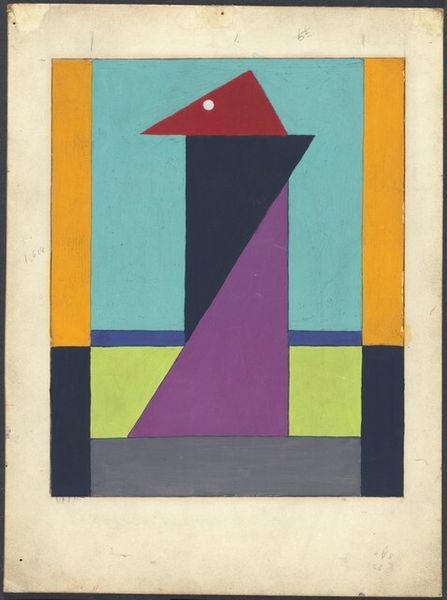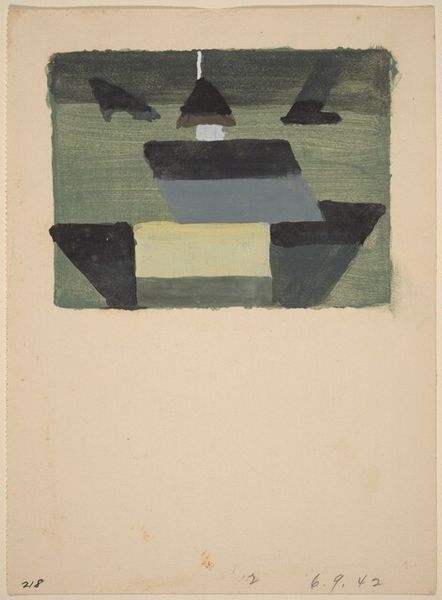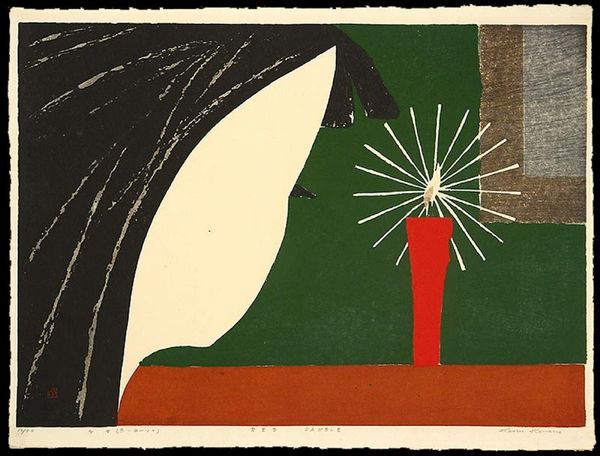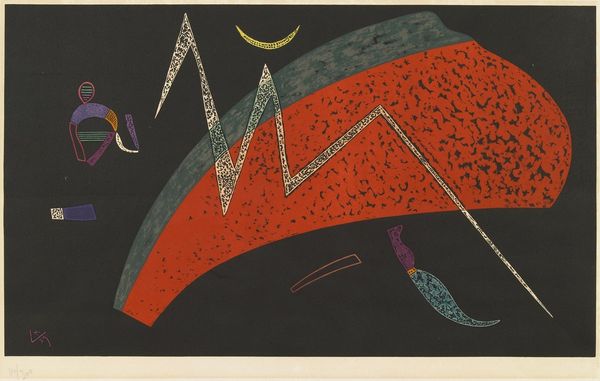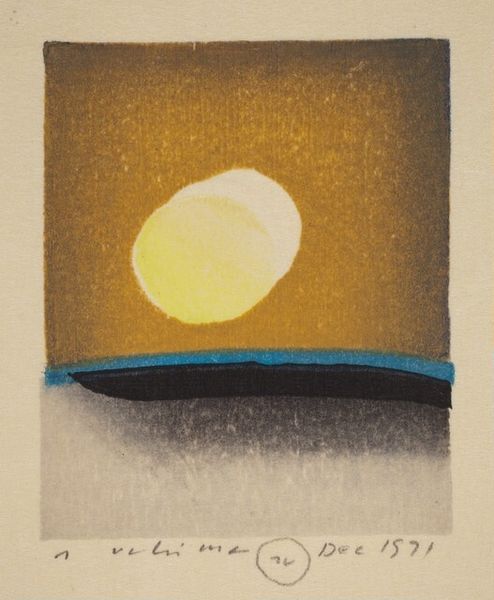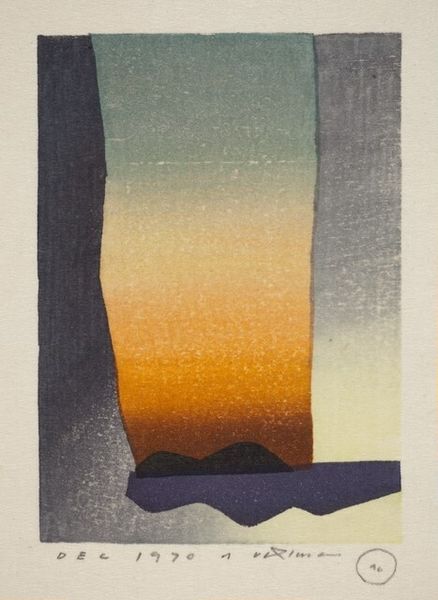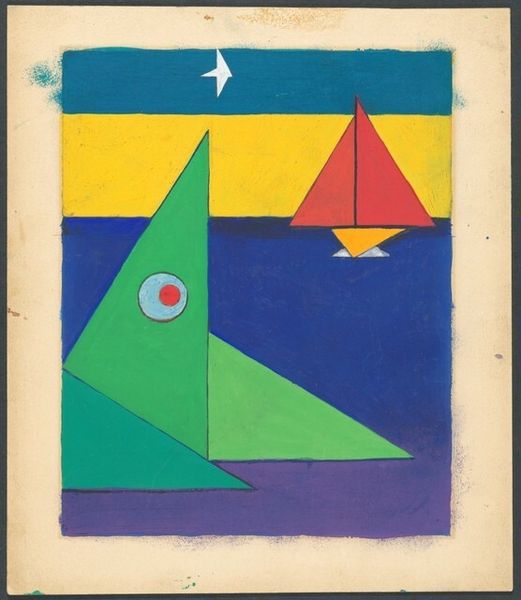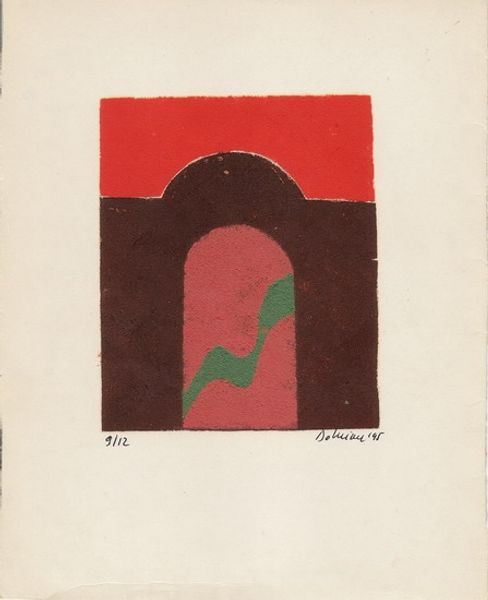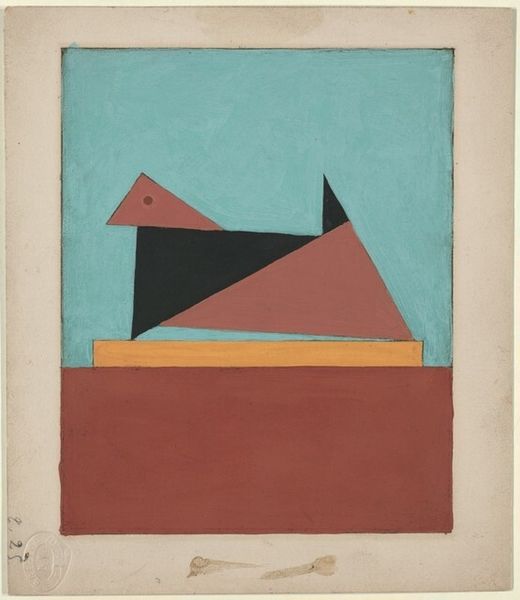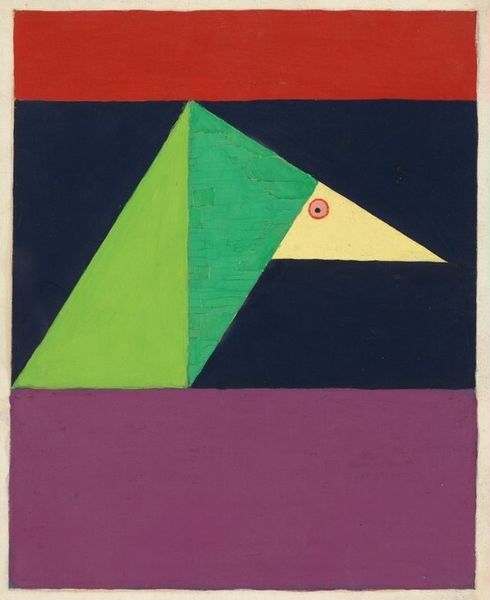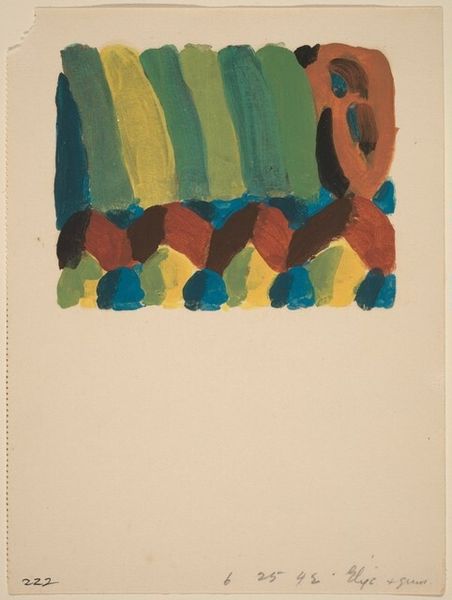
drawing, oil-paint
#
drawing
#
oil-paint
#
geometric
#
abstraction
#
modernism
Dimensions: image: 20 x 17.15 cm (7 7/8 x 6 3/4 in.) sheet: 24.13 x 20.96 cm (9 1/2 x 8 1/4 in.)
Copyright: National Gallery of Art: CC0 1.0
Editor: So, this is Edward Steichen's "Khor, in His House on Top of the World," made around 1922. It's a vibrant, small painting combining oil and drawing. The shapes are very geometric, and the color is so simple, almost like blocks. What can you tell me about this work? Curator: Notice how the brown, probably oil paint, anchors the composition? It implies weight, raw material. Steichen, known for his photography, here delves into a materiality that's about direct action. He handles the very stuff of painting. Does this bridge high art to more grounded production, you think? Editor: I hadn’t thought of that – bringing photography and painting together through materials, but I think I agree with you! The color choices feel really purposeful too. Why do you think he opted for such a stark palette? Curator: The intense blue and red read less as representation and more as material fact. It’s a modernist technique echoing industry, perhaps, or synthetic dyes. We see a departure from traditional art creation where things must ‘look natural’, as this seems to play around with manufactured materiality. Think about the industrial revolution and how its values changed art creation as we see it, especially in modernism. Editor: So it’s less about *what* is represented, and more about how those colours and materials themselves carry meaning through their context of production and use? It gives the painting a new sense of agency. Curator: Exactly. Consider the title also – "in his house". It highlights a dwelling but gives no other specification. Does this universality perhaps indicate a focus less on any particular person and more on themes present at the time of creation like home, building, creation? Editor: I see it now. I focused on the abstraction and didn't initially consider the implications of Steichen’s materials and process! Curator: Paying attention to process reveals the artist's intentions and societal contexts often missed at first glance. Editor: Thanks for making it clearer to me; now I see that the piece's value truly lies in how the materials speak to the period of the art, reflecting significant themes.
Comments
No comments
Be the first to comment and join the conversation on the ultimate creative platform.
